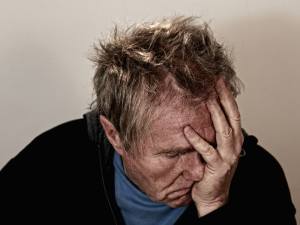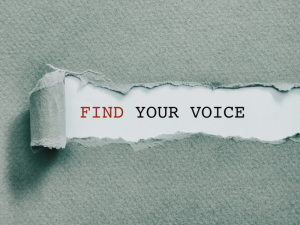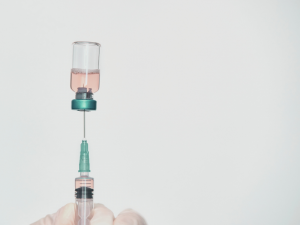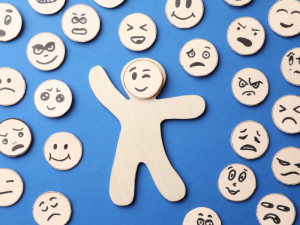Are you dreading the long cold dark evenings ahead now that the clocks have changed? Do you want to hibernate and overeat? If yes, you might be at risk of winter depression. Living in the northern hemisphere means the change of seasons can profoundly affect some people; low mood, craving carbohydrates, or simply wanting to hibernate through the often grey UK winters.
Living in the northern hemisphere means the change of seasons can profoundly affect some people; many of us have experienced feeling more cheerful when the sun is shining and the days are long. Others dread the clocks changing each autumn because it results in lowering mood, craving carbohydrates, or simply wanting to hibernate through the often grey UK winters. If that sounds familiar, you might be at risk of winter depression. The medical term is Seasonal Affective Disorder, shortened to SAD; September is the best month to take action, but it’s not too late if you read this at another time.
For people who experience SAD, the change in seasons has a much more significant effect on their wellbeing, energy levels and mood, sometimes with considerable impact on their daily life. SAD is a recognised mental health disorder. Like other types of depression, symptoms can vary, but the repeating pattern helps identify those at risk. Symptoms usually appear as soon as the days get shorter and are most severe between December and February. They typically improve or disappear in the spring and summer but return around the same time each year.
SAD facts
- It can affect anyone in the northern hemisphere and is rare in those within 30 degrees of the equator, where daylight hours are long, constant, and bright.
- SAD can begin at any age, but typically, the onset is between 18-30.
- It may be hereditary and affects children and adolescents, too.
- Doctors in the UK, Europe, Australia and Canada estimate that at least 5% of the population suffers from SAD.

Signs and symptoms of SAD can include:
- A persistent low mood or irritability
- Loss of pleasure or interest in hobbies and pastimes
- Feelings of despair, guilt and worthlessness
- Difficulty concentrating and memory problems
- Increased sensitivity to criticism or rejection
- Lethargy (lacking in energy)
- Social withdrawal
- Disturbed sleep and early morning awakening.
- Sleeping for longer than usual and finding it hard to get up in the morning
- Needing a nap in the afternoon
- Change in appetite
- Craving carbohydrates and gaining
- Weight gain
- Heavy feeling in the arms or legs
- Anxiety, tension, or stress that are harder to manage
- Feelings of hopelessness, guilt, and sadness
- Decreased libido
SAD is an often misunderstood illness, with affected people sometimes attributing their symptoms to stress or other lifestyle factors such as being lazy or simply overeating because they are spending more time indoors – not accurate nor helpful. One of the most important distinguishing features of SAD is that it’s seasonal. Symptoms disappear in spring, and depending on the intensity of sunlight, it can be a sudden or gradual improvement.
What causes seasonal affective disorder (SAD)
The exact cause of SAD is not well understood; it’s often linked to reduced exposure to sunlight during the shorter autumn and winter days. Compared to the 19th century, when 75% of the population worked outdoors. Less than 10% of people work in natural outdoor light or get access to enough daylight, which has dramatically increased light deficiency symptoms. The leading theory is that a lack of sunlight in winter reduces the efficient function of the hypothalamus gland in the brain, which in terms affects:
- Melatonin is the hormone that makes us sleepy; the body may produce it at higher than normal levels in people susceptible to SAD.
- Production and serotonin levels, a hormone that affects mood, appetite and sleep, a lack of sunlight may lead to lower serotonin levels, which affects mood.
- The body’s circadian rhythm or internal clock uses sunlight to time various essential functions, such as when we wake up, so lower light levels during the winter may disrupt the body’s internal clock and lead to SAD symptoms.
- It’s also possible that some people may have increased vulnerability to seasonal affective disorder because of previous trauma, a stressful event such as childbirth, redundancy or bereavement, long-term illness or genetic factors.
Help and treatment
SAD can be a disabling illness preventing people from functioning without extended medical treatment. Your GP should be your first port of call; they will access your wellbeing and mental health, asking about your mood, lifestyle, eating habits, sleep patterns, plus any seasonal changes in your thoughts and behaviour. Or they may use a paper or online assessment tool with multiple-choice Q&A, which can be a helpful way of assessing the severity and longevity of your symptoms. Two or more consecutive winters of symptoms are needed to confirm a diagnosis of SAD.
Tip: Make a list of your symptoms and consider booking a double appointment.
Treatments for SAD
Several treatments are available for SAD, including lifestyle measures, medication and light therapy; you need to use these from September.
NICE recommendations
The National Institute for Health and Care Excellence (NICE) recommends that SAD be treated the same way as other types of depression.
Lightboxes and light therapy
Some people with SAD find that light therapy can help improve their mood; this involves sitting by a special lamp each morning. The light produced by the Lightbox simulates the sunlight that’s missing during the darker winter months. Lightboxes come in various designs, including desk and wall-mounted fixtures, visors and glasses. They produce a dazzling light measured in lux; the higher lux, the brighter the light and the less treatment time needed; for example, treatment using 10,000 lux Lightboxes can take as little as 30 minutes a day.
Lightboxes aren’t available on the NHS; they are expensive but free of VAT when used for medical use. Some companies will hire them and choose a Lightbox produced by an approved manufacturer. Most people can use light therapy. Approved medical lightboxes have filters that remove harmful ultraviolet (UV) rays, so most people have no risk of skin or eye damage. However, exposure to bright light may not suit everyone; please check with your GP first. The Seasonal Affective Disorder Association provides a list of recommended manufacturers; click here for details.
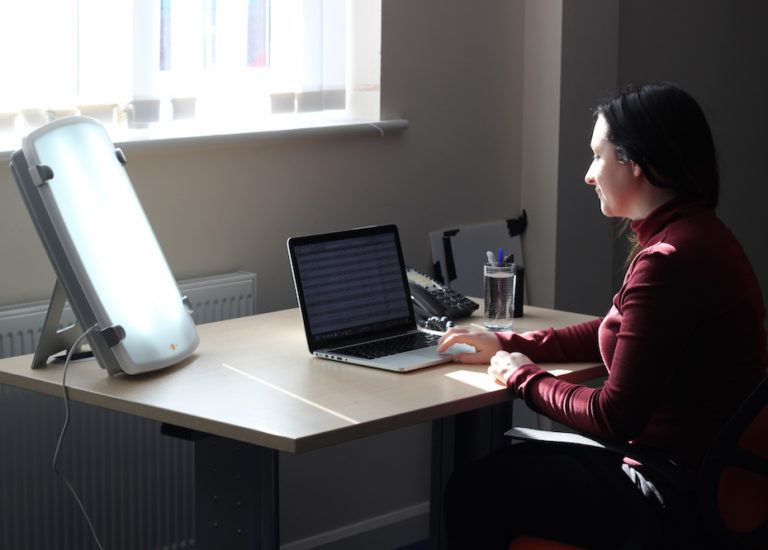
How does light therapy work?
Light therapy (phototherapy) encourages the brain to reduce the level of melatonin, the hormone that makes us sleepy. It also increases the production of serotonin, the happy hormone; more about serotonin in the next post.
The evidence is mixed regarding the overall effectiveness of light therapy; some studies have concluded it is helpful if used first thing in the morning. Others state they are best for short-term results, helping relieve symptoms when they occur. If light therapy is beneficial, most people notice an improvement in their symptoms within 7–14 days.
Things to consider when using a lightbox:
- Never look directly into the light.
- Keep the box 6- 60 cm (16 to 24 inches) away from your face.
- Follow the instructions carefully.
- Check with your doctor before using.
Dawn-stimulating alarm clocks
It may also be helpful for some people. They brighten the bedroom with gradual increases in light with a 30-minute sunrise timer, which helps to regulate the sleep/wake cycle. Fans report a boost in their mood, energy and productivity levels for the rest of the day.
Medication
Antidepressants can be helpful but can take four to six weeks to take full effect, and they are most effective if taken in the autumn before the symptoms appear and continue until spring. This means if you had symptoms last year, you need to pop along with the doctors this month.
Talking therapies
Cognitive behavioural therapy (CBT) or counselling are NICE recommendations; results vary.
Self-help
- Getting as much natural sunlight as possible, even a brief lunchtime walk, can be beneficial.
- During the autumn and winter, make your work and home environments as light as possible. Sit near windows when indoors, or use daylight lamps.
- Eat a healthy, well-balanced diet. Eat food rich in tryptophan, which is an amino acid that helps make serotonin (see the next post)
- Learn simple relaxation and stress-relieving breathing techniques.
- Exercise will produce the feel-good hormone serotonin.

Steps to prevent Seasonal Affective Disorder
If you’ve been diagnosed with seasonal affective disorder, you can reduce the onset of symptoms and sometimes prevent it with early action.
- Start using the lightbox before SAD symptoms begin to ensure you get enough light throughout the day.
- Consider using a daylight alarm clock
- Take a walk outside early in the day
- Monitor your mood and energy level
- Plan pleasurable activities during colder months
- Seek help sooner rather than later if you are struggling
Share
Tell family, friends and work colleagues if you have Seasonal Affective Disorder (SAD) and how it affects YOU. They will be able to offer YOU support if they understand how your mood changes during the winter.
Disclaimer
Please note: All entries on this blog offer information and guidance only; and should not be considered a substitute for medical advice, diagnosis or treatment given in person by a trained health professional.
SaveSave
SaveSave
SaveSave
SaveSave
SaveSave
SaveSave
SaveSave


